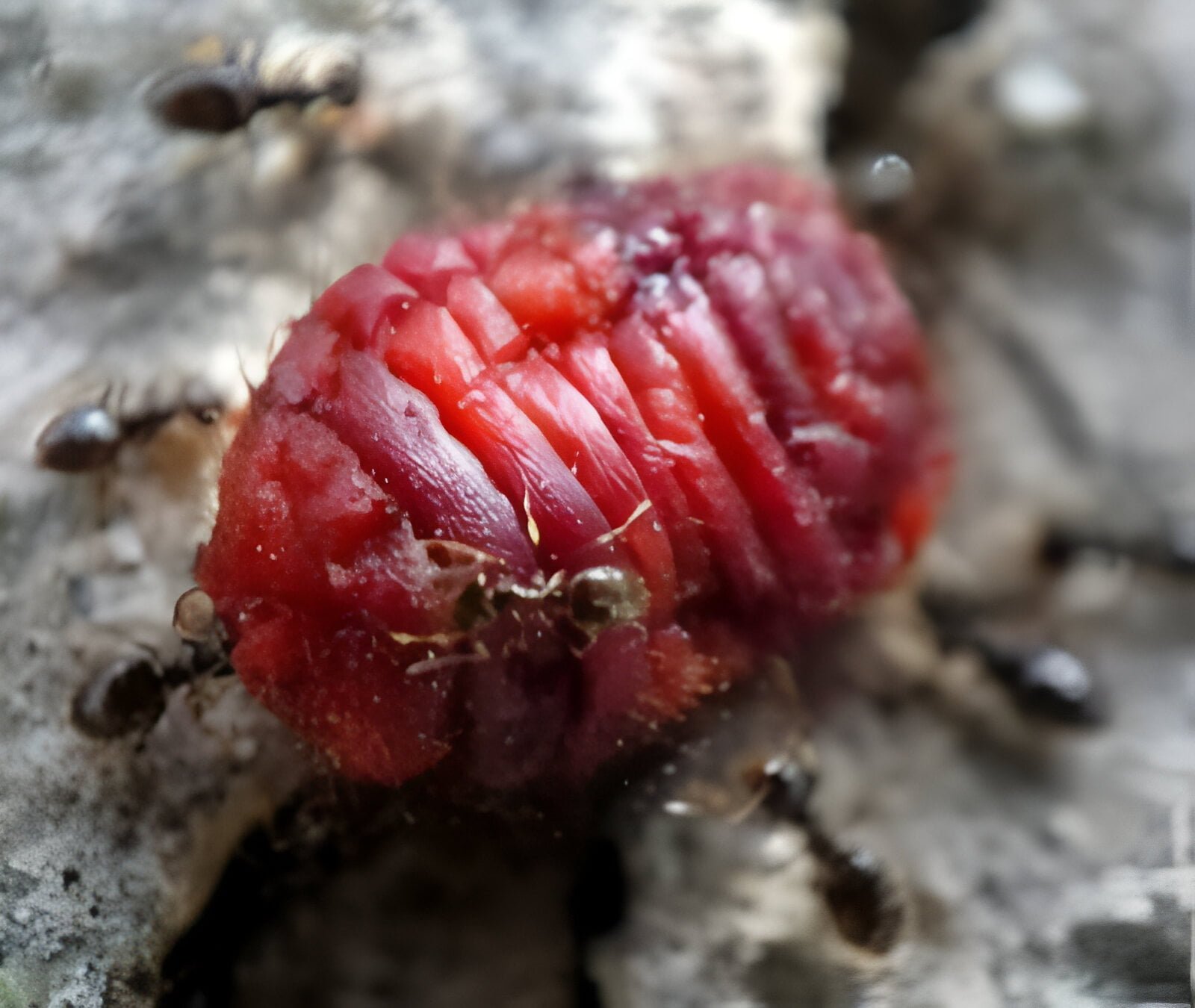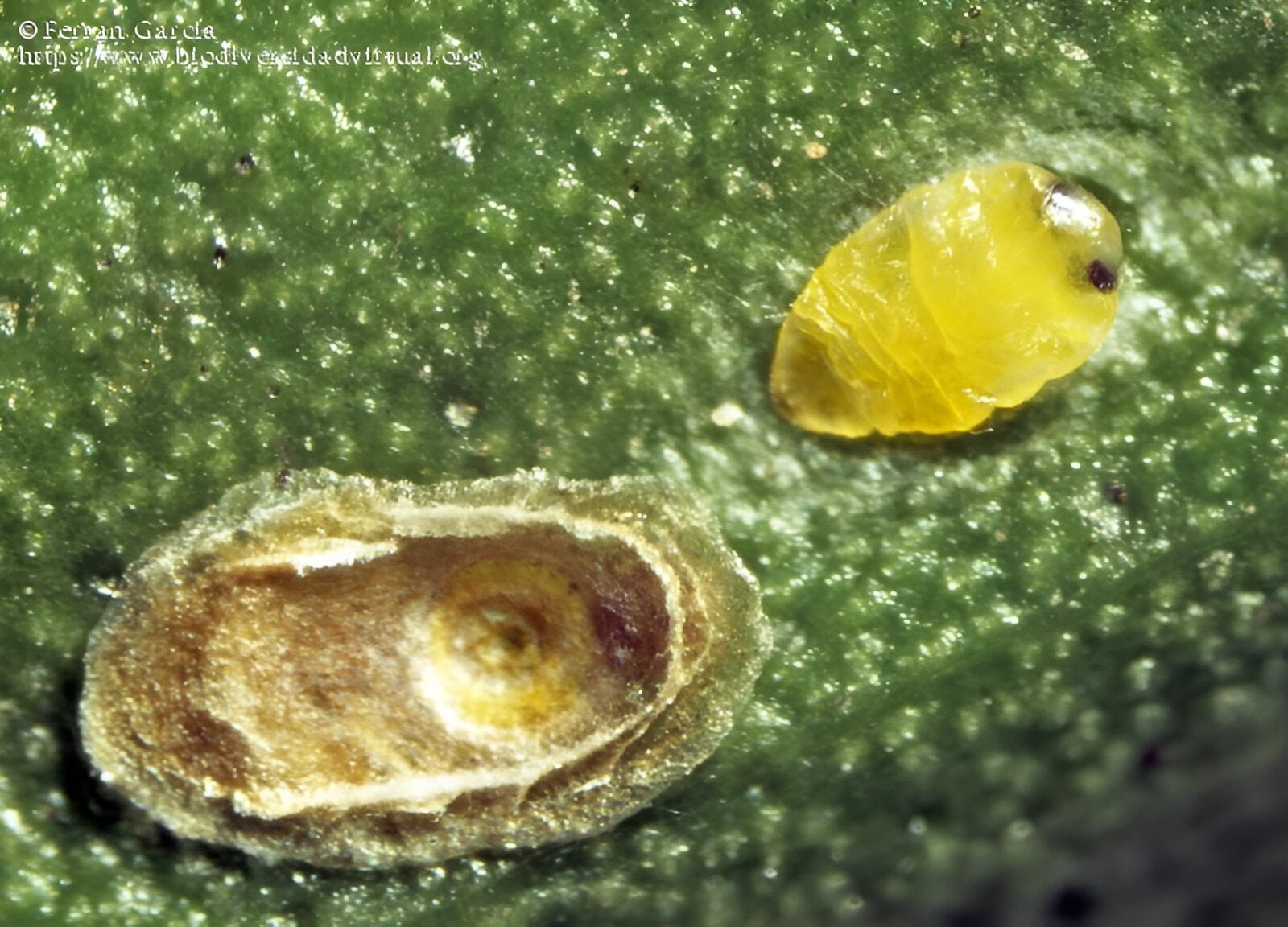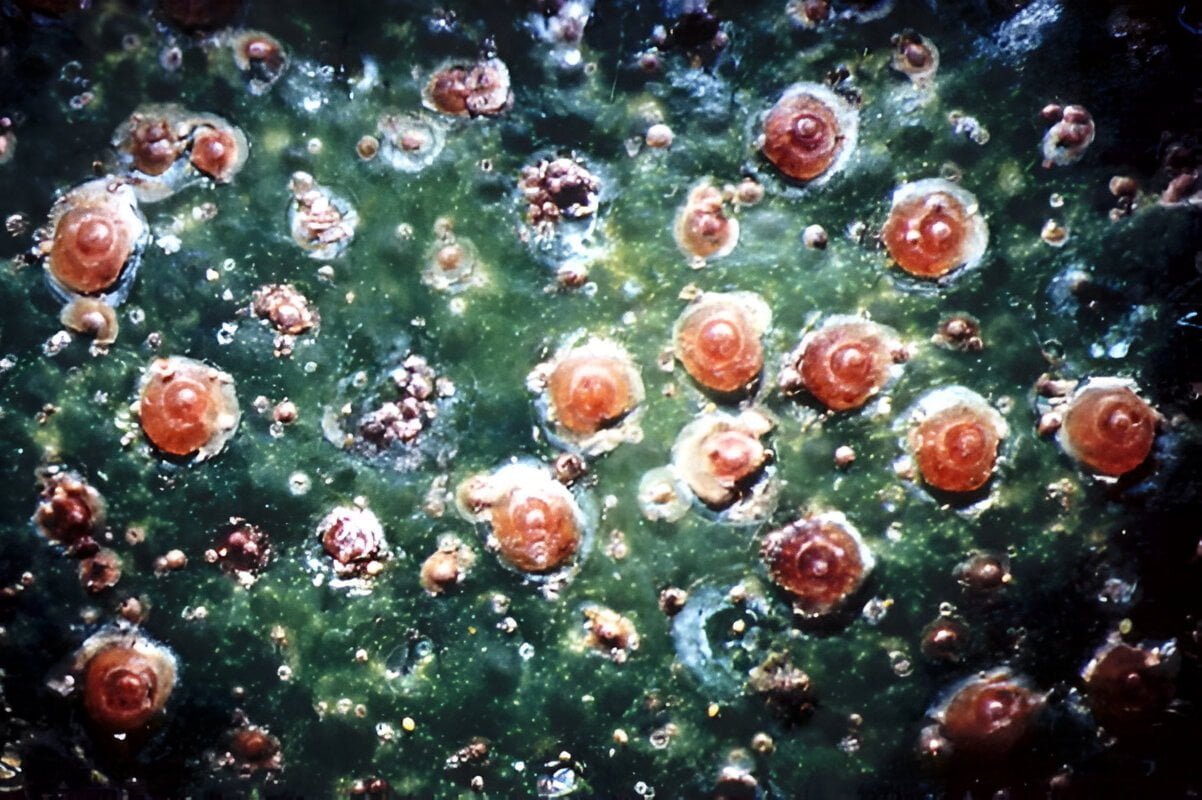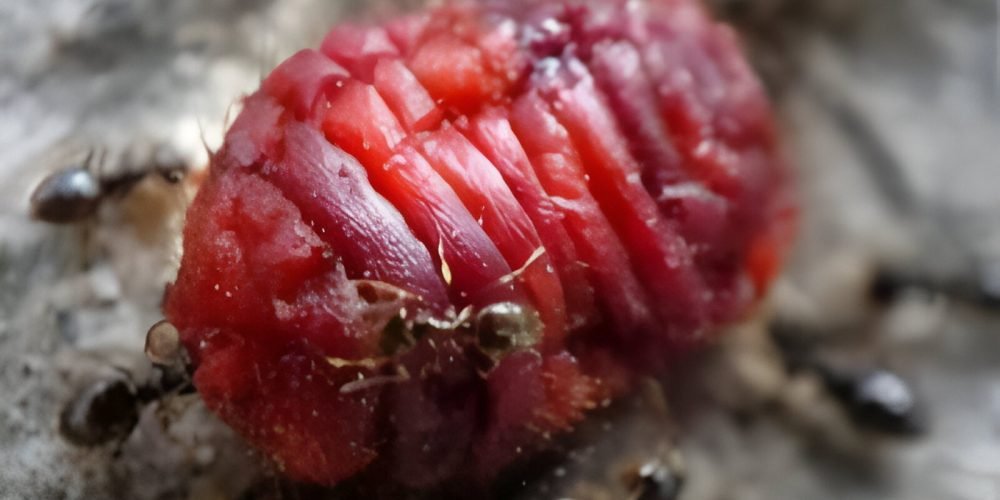Table of contents of the article
ToggleThe red scale insect is an agricultural pest that can lead to significant losses. In this article on your website, World of Plants, we review the symptoms of infection and methods of control
Symptoms of the red scale insect
- Scientific name : Aonidiella aurantii
- the family : homoptera
- The secretion of a toxic substance, causing the leaves to yellow and stunt, and then to fall, starting from the terminal branches, and the fruits to yellow, their growth to stop, and the branches to wither.

Description of the red scale insect
The female insect has a round shell with an average diameter of (2 mm). The color of the shell is grayish red and the central navel is dark red. The male insect is covered by an elongated shell (1 mm) and its navel is terminal.
. It is found in all parts of the plant but is most noticeable in the fruit.

Causes of red scale insect
- The intense and continuous use of pesticides has caused the development of resistance in this pest.
- The decrease in temperature increased the size and prolonged the growth period
Suitable conditions for the spread of the red scale insect
Depending on environmental conditions, the highest production rate is approximately 7 crawlers per day for the female in summer, and only one crawler per day in winter.
Development cycle of the red scale insect
- The female gives birth to between 100 and 150 young, and live nymphs or reptiles emerge from under their mother's cover at a rate of 2 to 3 per day. When they hatch for the first time, the nymphs are yellow in color and search for a suitable place to settle in depressions on branches, leaves or fruits. Then it begins feeding by inserting its mouth parts deep into the plant tissue and sucking the sap from the cells. The saliva they inject is highly toxic.


Losses of the spread of the red scale insect
- Severe infestation causes discolouration, distortion of buds and leaf drop.
- The fruit may become pitted and unmarketable. The bark of the tree may split, and the branches and twigs may die, sometimes leading to the death of the tree

Control strategy
Preventive measures to prevent the occurrence of the red scale insect
- Pruning: You should remove affected plant parts when possible.
- The field should be monitored routinely and looked for signs of the pest
Chemical and organic control recommendations against the red scale insect
- Through a number of introduced Hymenopteran parasites
- Use of parathion, dimethoate, and summer oil
- Pheromone disrupting marriage.
- Petroleum-derived spray oils are used
In conclusion, we would like to note that we, at the world of plants website, offer you all the necessary services in the world of plants, we provide all farmers and those interested in plants with three main services::-
- Artificial intelligence consulting service to help you identify diseases that affect plants and how to deal with them.
- Blog about plants, plant diseases and care of various crops ... You are currently browsing one of her articles right now.
- An application that provides agricultural consultations to clients, as well as a service for imaging diseases and knowing their treatment for free – Click to download the Android version from Google Play Store، Click to download the IOS version from the Apple App Store.
References:
- Furness, G.O., et al. “A history of the biological and integrated control of red scale, Aonidiella aurantii on citrus in the Lower Murray Valley of Australia.” Entomophaga 28.3 (1983): 199-212
- VACAS, Sandra, et al. Mating disruption for the control of Aonidiella aurantii Maskell (Hemiptera: Diaspididae) may contribute to increased effectiveness of natural enemies. Pest management science, 2012, 68.1: 142-148.
- Atmospheric loss of pesticides above an artificia vineyard during air-assisted spraying
- history of the biological and integrated control of red scale,Aonidiella aurantii on citrus in the lower Murray valley of Australia – springer
Mating disruption for the control of Aonidiella aurantii Maskell (Hemiptera: Diaspididae) may contribute to increased effectiveness of natural enemies – WILEY ONLINE LIBRARY
Atmospheric loss of pesticides above an artificial vineyard during air-assisted spraying – sciencedirec




